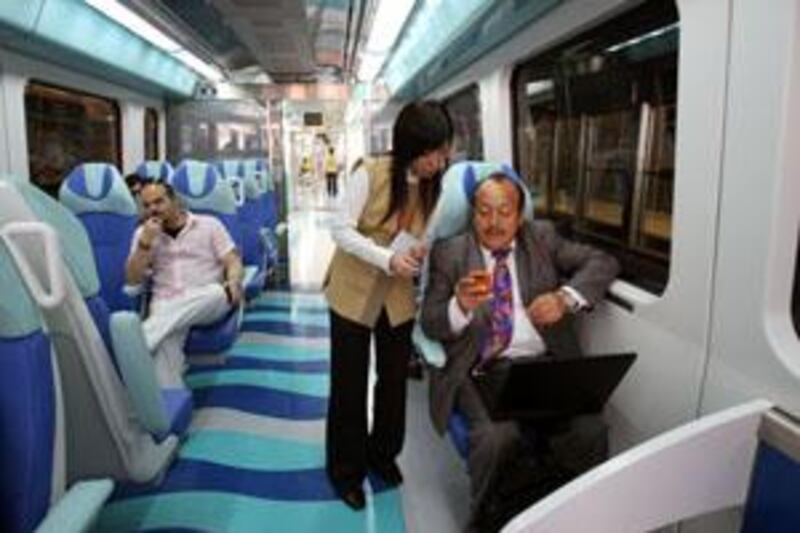The Metro is running. Now the Roads and Transport Authority faces its next, and perhaps bigger, challenge: persuading the residents of Dubai to give up their cars and use it. The RTA has set itself an ambitious target, saying it wants 30 per cent of the city's population using public transport by 2020. Currently, that figure is just six per cent.
But experts are optimistic that 30 per cent is achievable. Christian Wolmar, a British railway historian, compared the new network to one of the world's oldest, the London Underground. "When the first metro system was built in London, in it was an immediate hit because it was interesting and different," said the author and broadcaster. "It was an instant success, given how dark and dingy it was. People had never travelled in trains in tunnels before."
Yesterday was the Dubai system's first test: would Serco, the British company that will operate the Metro for the next seven years, be able to translate its experience running similar operations in the UK, including the Docklands Light Railway in London, into a smooth launch? By last night, it seemed Serco had passed that test. "They are very good at these sorts of things," said Mr Wolmar. "They are not particularly interested in taking risks but are good at management contracts with a margin."
That, said Mr Wolmar, was one part of the formula for a successful Metro; the other was low fares. Dubai has that, too, with the most expensive ride in standard class costing only Dh5.80 with a pre-paid ticket. "It sounds like an attractive system, with everything going for it," added Mr Wolmar. The next step will be ingraining the idea of the Metro as an integral part of Dubai life. To that end, and with the multi-million-dirham launch out of the way, the RTA can be expected to keep up its advertising campaign, using the "My City My Metro" slogan on billboards and television and in radio spots and cinema adverts.
A further burst of publicity will accompany each batch of station openings, as the remaining 19 of the 29 Red Line stops are introduced to the public. As well as the service itself, the RTA will need to sell the network's convenience, in a car-addicted city where for much of the year even a short walk to a mass-transit station is all but unthinkable. Much effort has been put into providing parking, so that commuters can start their journeys by car but avoid the clogged roads of central Dubai.
The park-and-ride car lots at the Rashidiya and Nakheel Harbour and Tower stations, each with 3,000 spaces, are free for Metro passengers, as are the smaller car parks at other stations. The feeder bus routes will be emphasised, too. More than 50 are already running, with scores more set to join them as new stations open. If all else fails, there is one more weapon at Dubai's disposal: Salik. The RTA is expected to add to the current four tolling points and could increase the Dh4 charge in a further effort to make driving less attractive.
If it succeeds, said Mr Wolmar, who has written two books on the London Underground, the Metro's Dh28 billion (US$7.6bn) cost will have been money well spent. "It's a public investment that will last 100 years," he said. eharnan@thenational.ae






